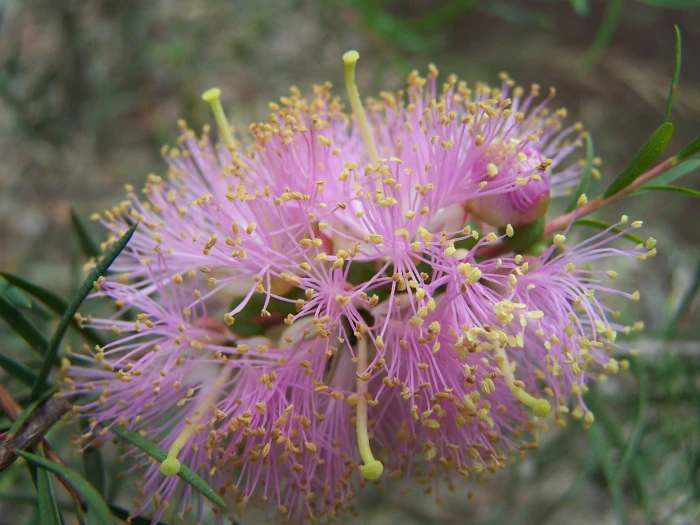Graceful Honey Myrtle
(Melaleuca radula)
Graceful Honey Myrtle (Melaleuca radula)
/
/

Gnangarra
CC BY 2.5 au
Image By:
Gnangarra
Recorded By:
Copyright:
CC BY 2.5 au
Copyright Notice:
Photo by: Gnangarra | License Type: CC BY 2.5 au | License URL: https://creativecommons.org/licenses/by/2.5/au/deed.en | Uploader: Gnangarra | Publisher: Wikimedia Commons | Title: Melaleuca_radula_01_gnangarra.jpg | Notes: User created page with UploadWizard |


















Estimated Native Range
Climate Requirements for North Little Rock, Arkansas
| This Plant | Your Site | Plant Suitability for Your Location | ||
|---|---|---|---|---|
| • Precipitation | 13" - 16" | 51" | Aquatic | Aquatic |
| • High Temp. | 89°F - 97°F | 93°F | Your summer temperatures are normal for this plant. | Excellent |
| • Low Temp. | 42°F - 48°F | 30°F | Your winter temperatures may be too cold for this plant | Too cold |
This plant may not grow well at your location - your precipitation is too high.
Summary
Melaleuca radula, commonly known as Graceful Honey Myrtle, is an evergreen shrub native to the sandy plains, coastal heathlands, and open Eucalyptus woodlands of Southwestern Australia. It typically grows to a height of 5 meters (20 feet) with a spreading habit and coarse bark. The shrub features narrow leaves and produces profuse pink or purple flowers in late winter, which are highly attractive to pollinators. The flowers are arranged in pairs forming a spike up to 40 mm (2 in) long and 30 mm (1 in) in diameter, with flowering mostly occurring from July to September. The blooms are followed by woody, almost spherical capsules, 4–6 mm (0.16–0.24 in) in diameter, clustered along the stem.
Graceful Honey Myrtle is valued for its ornamental flowers and ability to attract wildlife, particularly bees. It is used in cultivation for border planting, as a feature shrub, and in native gardens to provide year-round interest. This shrub is adaptable to a range of soil types, provided they have good drainage, and it thrives in full sun. While it requires medium amounts of water, it is relatively drought-tolerant once established. Care should be taken to avoid overwatering, which can lead to root rot. There are no major disease issues, but it can be susceptible to scale insects and sooty mold.CC BY-SA 4.0
Graceful Honey Myrtle is valued for its ornamental flowers and ability to attract wildlife, particularly bees. It is used in cultivation for border planting, as a feature shrub, and in native gardens to provide year-round interest. This shrub is adaptable to a range of soil types, provided they have good drainage, and it thrives in full sun. While it requires medium amounts of water, it is relatively drought-tolerant once established. Care should be taken to avoid overwatering, which can lead to root rot. There are no major disease issues, but it can be susceptible to scale insects and sooty mold.CC BY-SA 4.0
Plant Description
- Plant Type: Shrub
- Height: 3-6 feet
- Width: 1.5-2 feet
- Growth Rate: Moderate
- Flower Color: White, Pink, Purple
- Flowering Season: Winter, Spring
- Leaf Retention: Evergreen
Growth Requirements
- Sun: Full Sun
- Water: Medium
- Drainage: Medium, Fast
Common Uses
Bee Garden, Bird Garden, Butterfly Garden, Fragrant, Hummingbird Garden, Low Maintenance, Showy Flowers
Natural Habitat
Sandy plains, coastal heathlands, and open Eucalyptus woodlands
Other Names
Common Names:
Scientific Names: Melaleuca radula, Myrtoleucodendron radula
GBIF Accepted Name: Melaleuca radula Lindl.